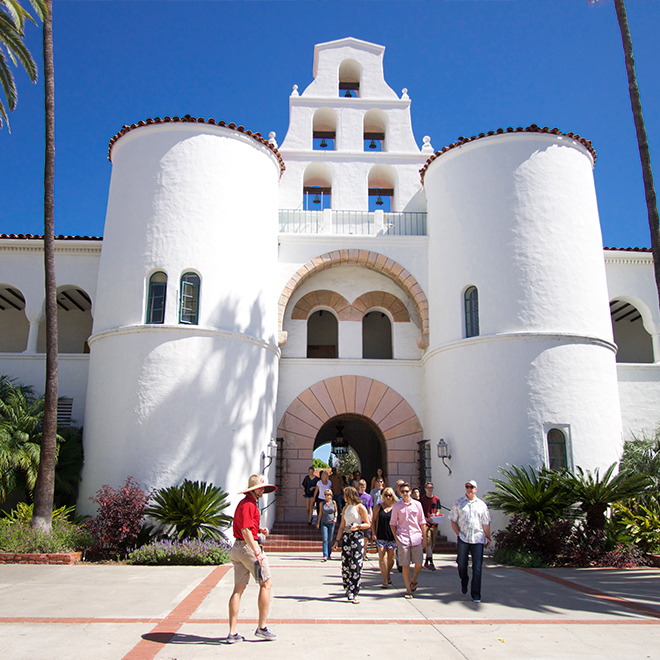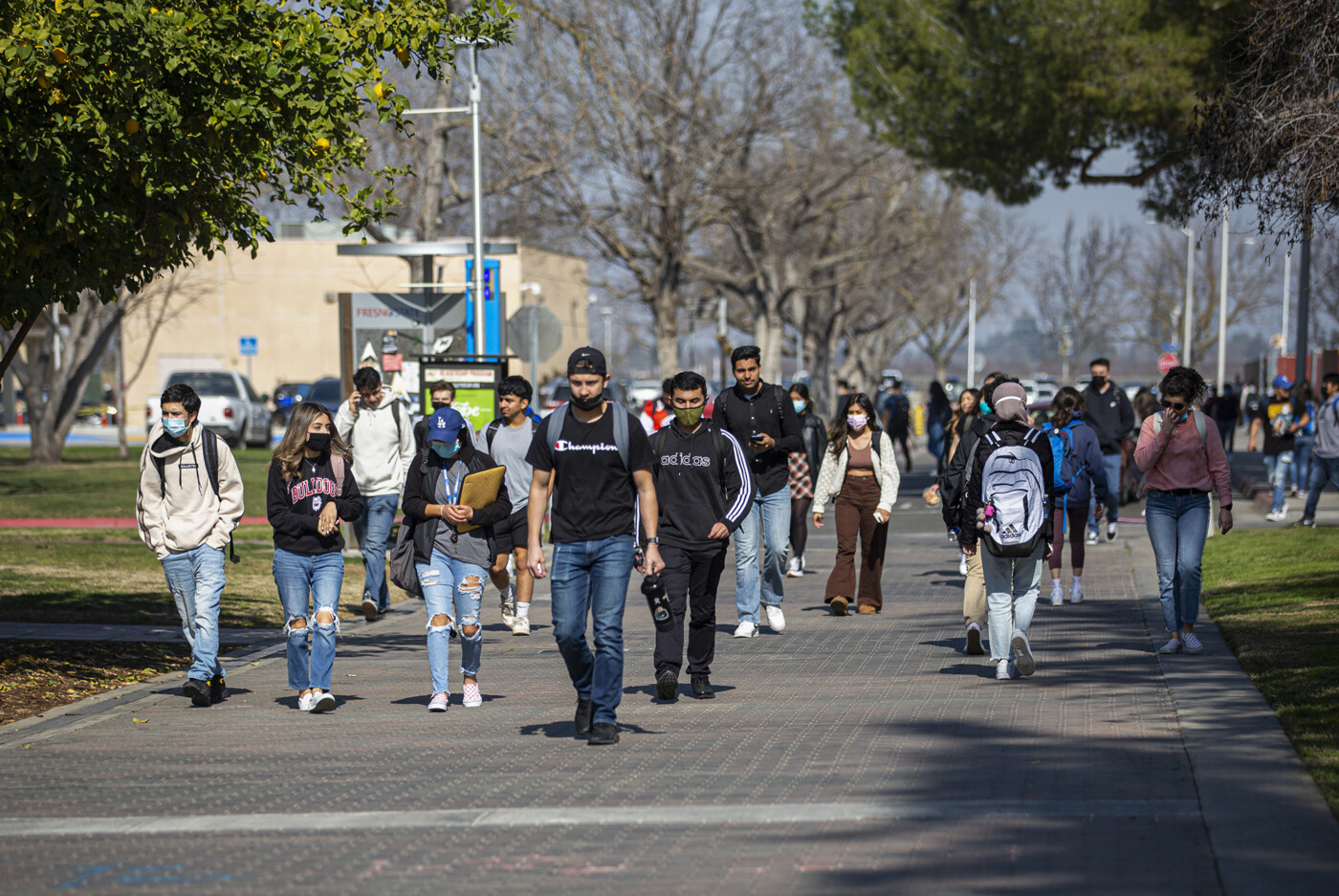In the acronym soup of California public higher education, gone are two three-letter combos that led legions of students to plug their noses annually: The SAT and ACT are (functionally) no more.
After the California State University system formally ditched the SAT and ACT as admissions requirements last week, the state is now the first — and only — in the United States to have no public university accepting standardized test scores for admissions.
The Cal State system followed in the University of California’s footsteps, which swore off the SAT and any other admissions test last year.
Cal State officials and the system’s academic senate cited studies showing that high school grades better predict how well students will perform in their first year of college than test scores. Other data showed that predictive power only went up marginally when test scores were combined with high school grades; the makers of the SAT say the test’s predictive boost is significant. Critics have also long maintained that the SAT rewards students who have the financial resources to hire tutors or enroll in prep courses to improve their test scores, leaving low-income students at a disadvantage.
Both the UC and Cal State system are now “test-blind” — a rarefied club of 86 academic institutions and systems nationwide. Another 1,825 other campuses don’t require test scores but will still assess them if a student submits that information, a concept known as “test-optional.”
So, what will the era of admissions without tests look like at the nation’s largest public four-year university?
Until the COVID-19 pandemic, the system’s 23 campuses chiefly admitted students based on a formula of high school grades and ACT or SAT scores. Only in the last two years, after suspending its SAT requirement during the pandemic, has the system relied on other factors.
The system’s Admissions Advisory Council plans to submit a final set of admissions eligibility criteria to the California State University Office of the Chancellor by late spring.
The recommendations will largely reflect the work the system did during the pandemic to replace its testing requirements with additional information about an applicant’s high school grades and socio-economic factors.

Currently, the minimum eligibility requirement is a 2.5 grade point average for California high school graduates and a 3.0 if the applicant isn’t a state resident. Another is to complete the required 15 courses in math, English, science, history and other subjects, known as A-G courses. Some campuses accept slightly lower GPAs but consider other academic and socio-economic factors.
The Admissions Advisory Council — in the first change to the system’s eligibility index since 1965 — is instead proposing that the minimum eligibility criteria include four factors:
- the students’ GPAs for the 15 required courses;
- whether students passed more than 15 of the required courses during their time in high school;
- whether students attend either a high school that is near the Cal State campus to which they’re applying or attend a high school with a high percentage of students who receive federal meal subsidies because they’re low-income;
- other socio-economic and interpersonal factors, such as whether students worked during high school, had no one else in their family complete college, had family commitments or volunteered.
The system is now developing the minimum GPA and weights for these factors. Once published, campuses will be able to use a formula to calculate whether applicants are eligible for admissions. It’s a quantitative approach that resembles use of an eligibility formula during the SAT era. Officials may continue to tweak it over time.
The Cal State system will roll out its new criteria gradually, giving it time to communicate the details to high school counselors. Current high school juniors who apply to enroll at a Cal State in fall 2023 will be admitted based on the current minimum eligibility criteria. Today’s high school sophomores seeking entry into a Cal State for fall 2024 will be admitted based on the current criteria or the new eligibility index in the works — whichever is more advantageous for them. Students applying for fall 2025 admissions will be governed by the new index.
Abandoning test-based criteria couldn’t come sooner for low-income students, said Cal State trustee Krystal Raynes, an undergraduate at Cal State Bakersfield.
“I remember saving up my lunch money to take both the PSAT and the SAT because my parents didn’t know what that was and didn’t want to spend money on me taking a test,” she said at the March board meeting, a day before the trustees voted unanimously to ditch admissions tests. “Meanwhile I knew students who were prepping with tutors in junior high, so there’s definitely that economic gap there.”
But minimum eligibility isn’t enough of a cut-off for numerous Cal State universities. Right now seven universities are fully impacted, a technical designation meaning a major, program or the whole university receives applications from more qualified students than there’s space. All but seven campuses have at least one major program that’s impacted.
The Cal State admissions policy plan is to allow these oversubscribed programs to continue using a combination of up to 21 different admissions factors to admit students. These overlap partly with the newly proposed minimum eligibility criteria but include other variables, such as grades in specific high school subjects, whether students qualify for an application fee waiver and their military status. No campus uses all 21 factors for admissions.
Like the minimum eligibility index in development, all of these factors are data the Cal State application already collects. The system software is sophisticated enough to calculate the admissions scores for each campus based on the admissions criteria they select.
Though the Cal State system admits 93% of the California high school students who apply, several campuses are far more selective. Cal Poly-San Luis Obispo, and San Diego State, the most competitive, admit only a third of their California freshmen applicants.
Presently six of the 23 Cal State campuses won’t consider any in-state student with a GPA below a 2.5. Even within this group, campuses are using multiple factors to handle their influx of applicants by balancing academic and socio-economic factors.

“Unequivocally, I think it is a great move” to remove admissions tests, said San Diego State President Adela de la Torre. “If we’re going to talk about diversity and inclusion, you have to have metrics that reflect a broader set of criteria.”
The San Diego university expanded its criteria for admission for students entering last fall. Half of the admissions score is based on the GPA a student earned in the 15 required courses for entry. The other half includes the grades in math and science courses, foreign language, history and whether a student comes from a local high school. The university also gives extra points for signs of socio-economic hardship among students applying from nearby high schools or entering special programs for marginalized students, like for foster youth.
San Diego State will largely keep this formula beyond 2023, but like other campuses, it may change its weights and add more admissions variables over time.
Long Beach State guarantees admission to local high school students who meet the minimum eligibility requirements. Other students will be held to a higher admissions standard. All impacted Cal State campuses give some kind of admissions priority to applicants attending local high schools. Long Beach State has more than 50 public and private high schools in its local service area.
At Cal Poly-Pomona, 86% of the points in the admissions formula come from academic factors and 14% are based on non-academic areas.
The UC campuses hire hundreds of part-time application readers who undergo training to go through every application. The Cal States have no readers and never did. And unlike the UC, the Cal State application doesn’t ask students to provide essays or extended written responses.
UCLA hires 200 part-time readers who earn stipends of $1,350 to $2,500 depending on the number of applications they review. The university received nearly 150,000 freshmen undergraduate applications for fall 2022 enrollment, the most in the country. Other UC campuses shared that they bring on 50 to 160 readers; the numbers vary depending on each campus’s application volume.
The price tag for readers at UCLA is between $400,000 and $500,000. Meanwhile, the entire operating budgets of the admissions offices at Cal Poly-San Luis Obispo and Cal State Fullerton are around $2.2 million.
Cal State campus admissions officials will occasionally review individual applications, such as when a denied student files an appeal. Admissions teams also spot-check applications to see if students omitted required information. Plus some music and performing arts programs require applicants to submit portfolios that faculty then review.
